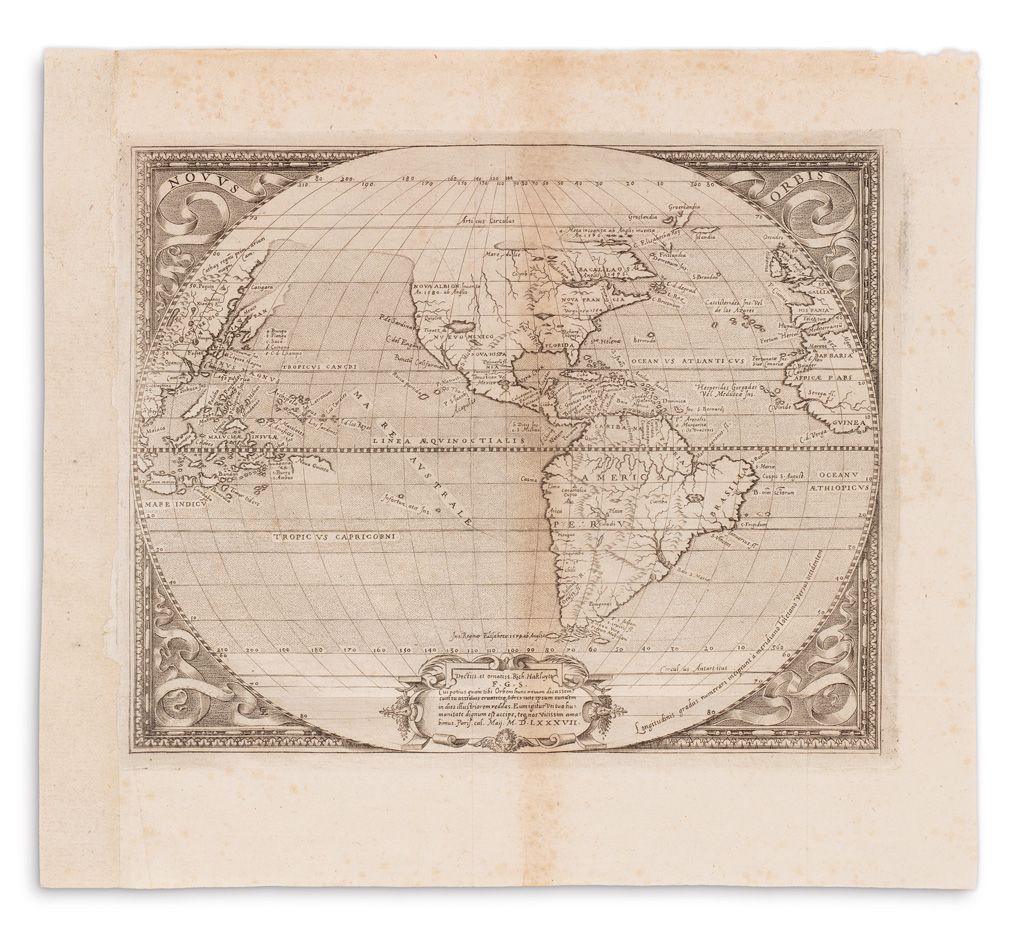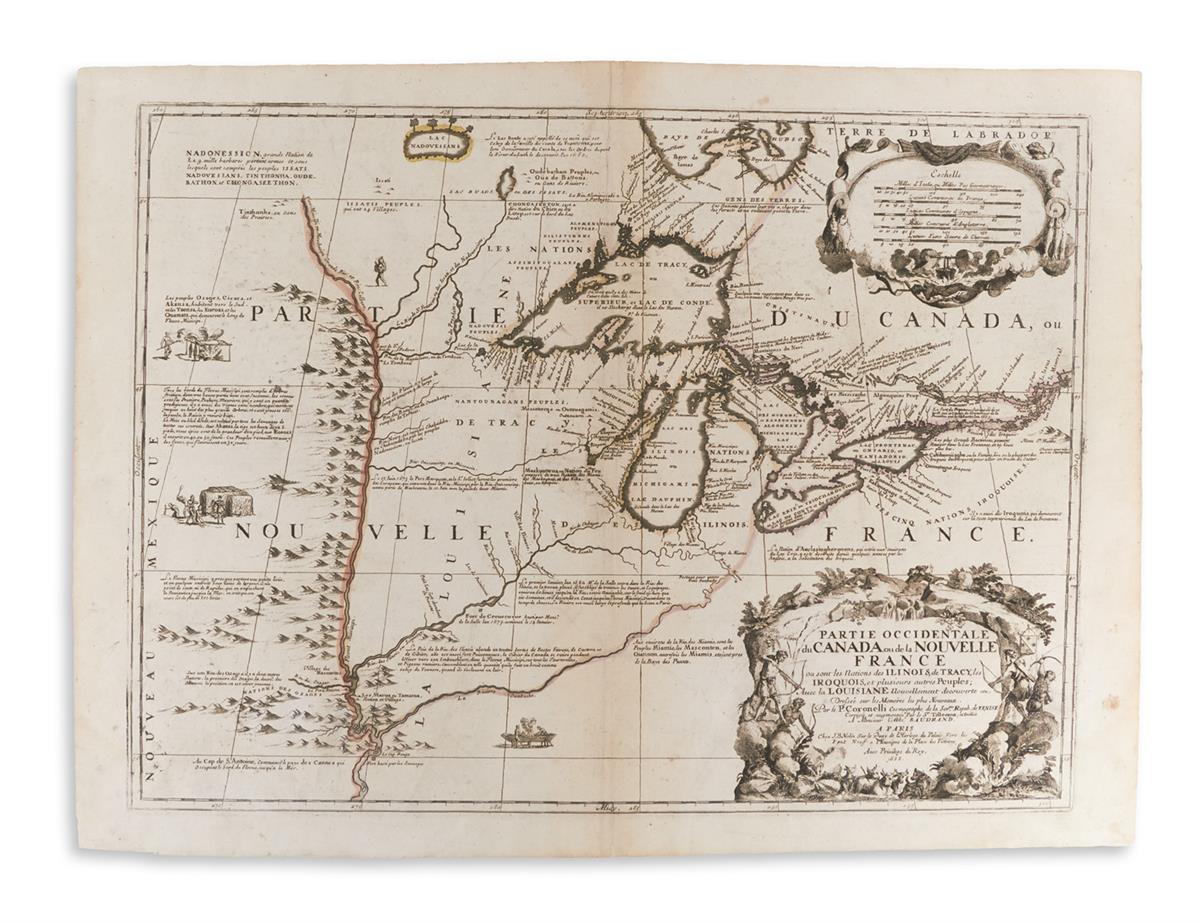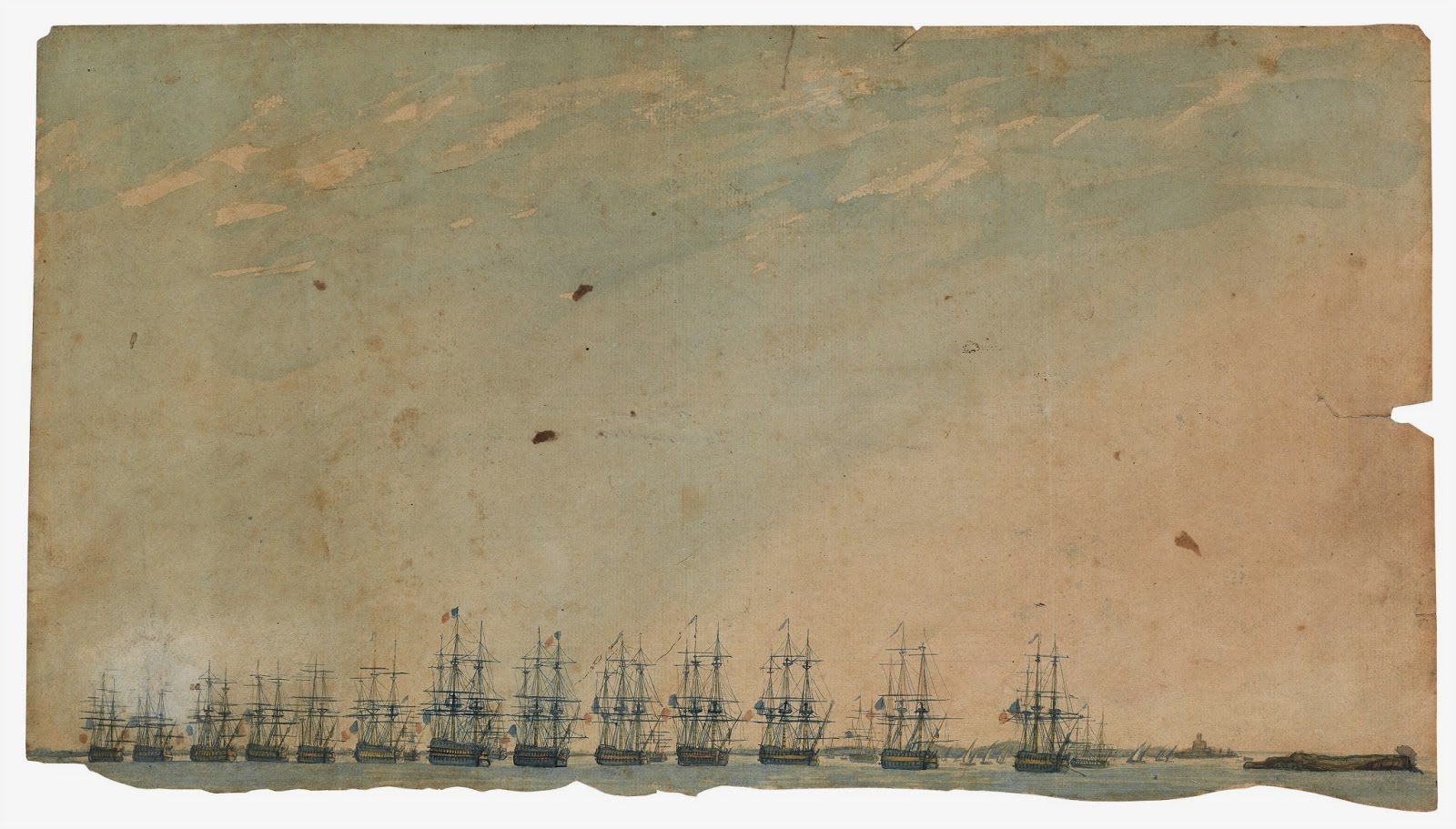The Foundation of a Capital: Early Maps of Washington D.C.
Washington, D.C., with its neoclassical architecture and grand monuments, almost seems as if it arose organically over centuries on the shores of the Potomac. In reality, the Capital City was the result of compromise, a few years of careful planning and committed building. Our upcoming auction of Maps & Atlases, Natural History and Color Plate Books Featuring The Mapping of America includes a selection of maps that detail the early days of the District.
The city was officially founded on July 16, 1790. The Congress of the Confederation had been temporarily located in New York City after being rousted from Philadelphia by the Pennsylvania Mutiny of 1783, during which a group of soldiers demanded payment for their service in the Revolutionary War. After several relocations, the United States Congress was officially formed in 1789, and set about establishing a home for the government. The Residence Act established the capital on the banks of the Potomac, decreeing that the District should encompass no more than 10 square miles on each side.
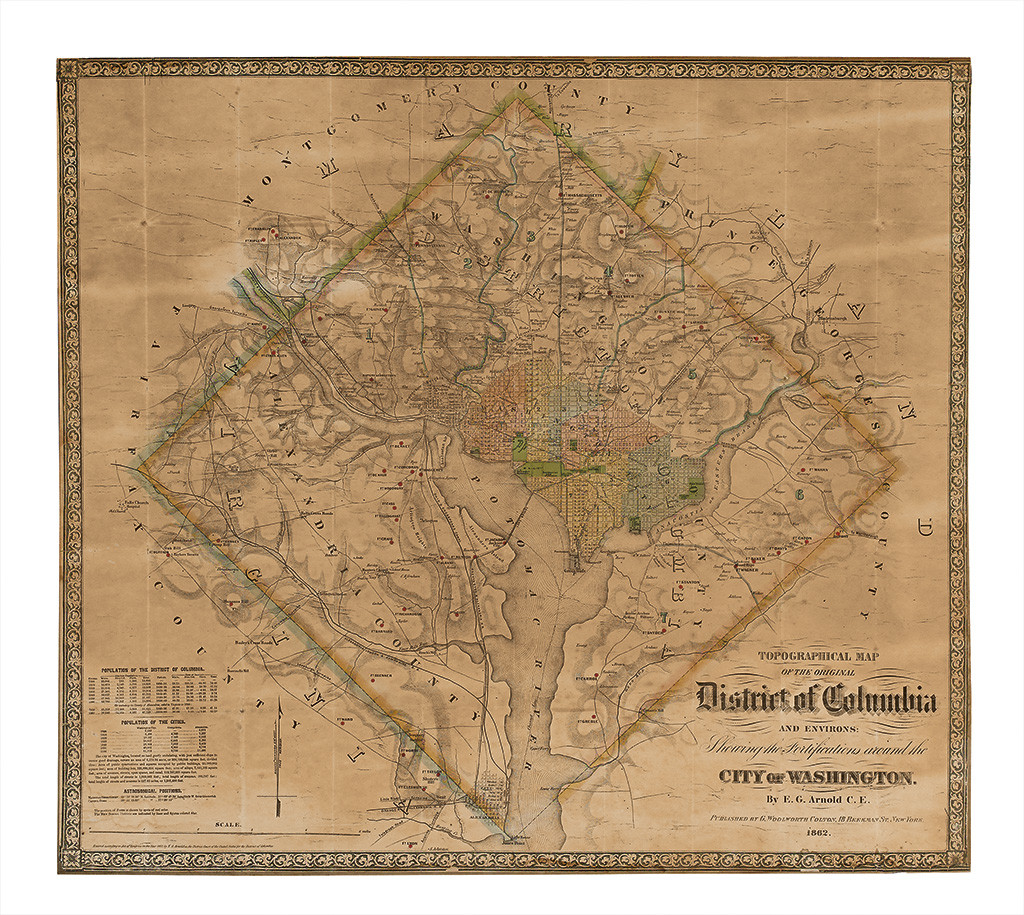
The original square boundary, seen above, was surveyed and marked with boundary stones by Andrew Ellicott, Benjamin Banneker and several other assistants. Several of the boundary stones can still be found in the city today.
First printed map of the city of Washington, D.C.
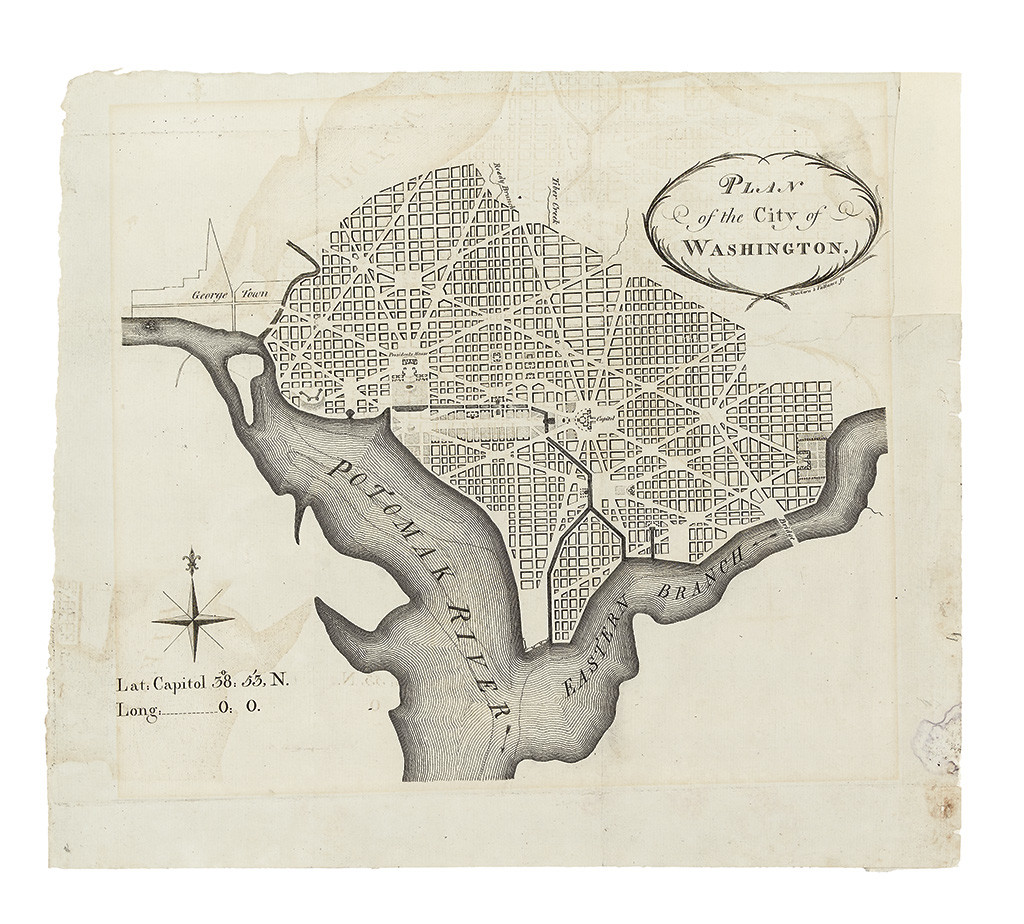
According to several sources, this is the first printed map of the city of Washington. Thackara and Vallance had been hired by Ellicott to make a larger map of the city, but took longer than expected to complete it, printing this smaller map first (Baynton-Williams).
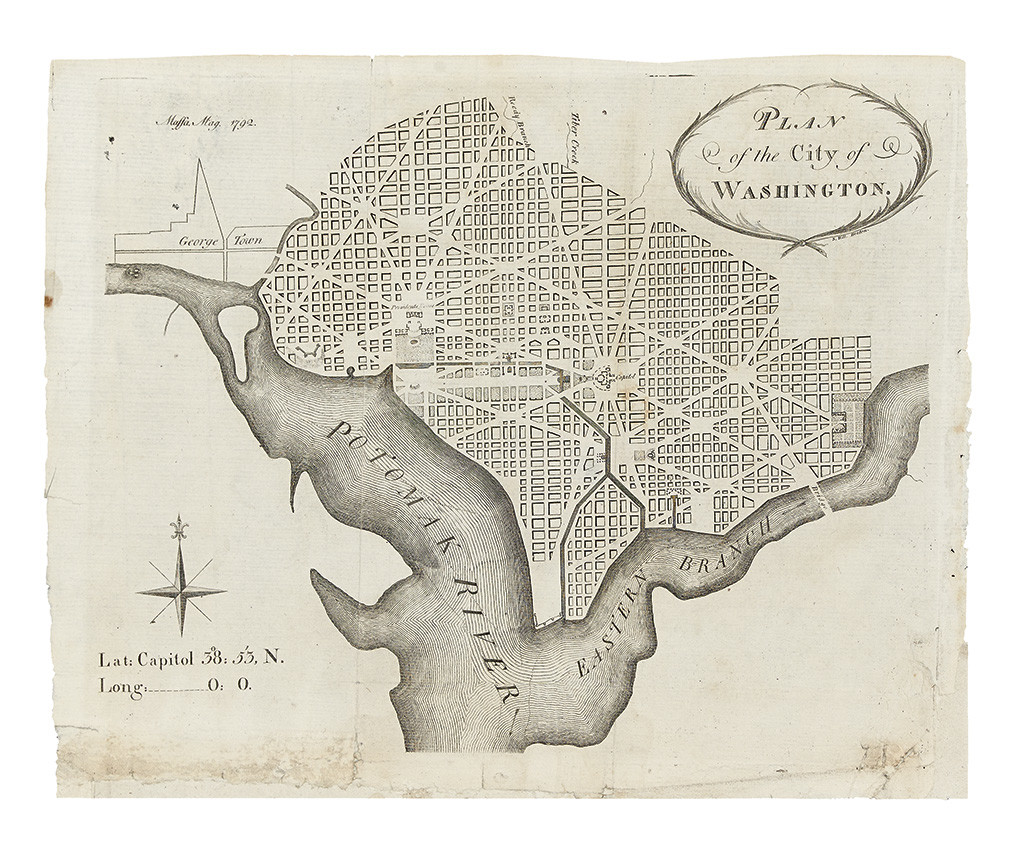
The second printed map of the city follows the Thackara and Vallance map closely. Illustrated primarily by Samuel Hill, it was published in The Massachusetts Magazine.
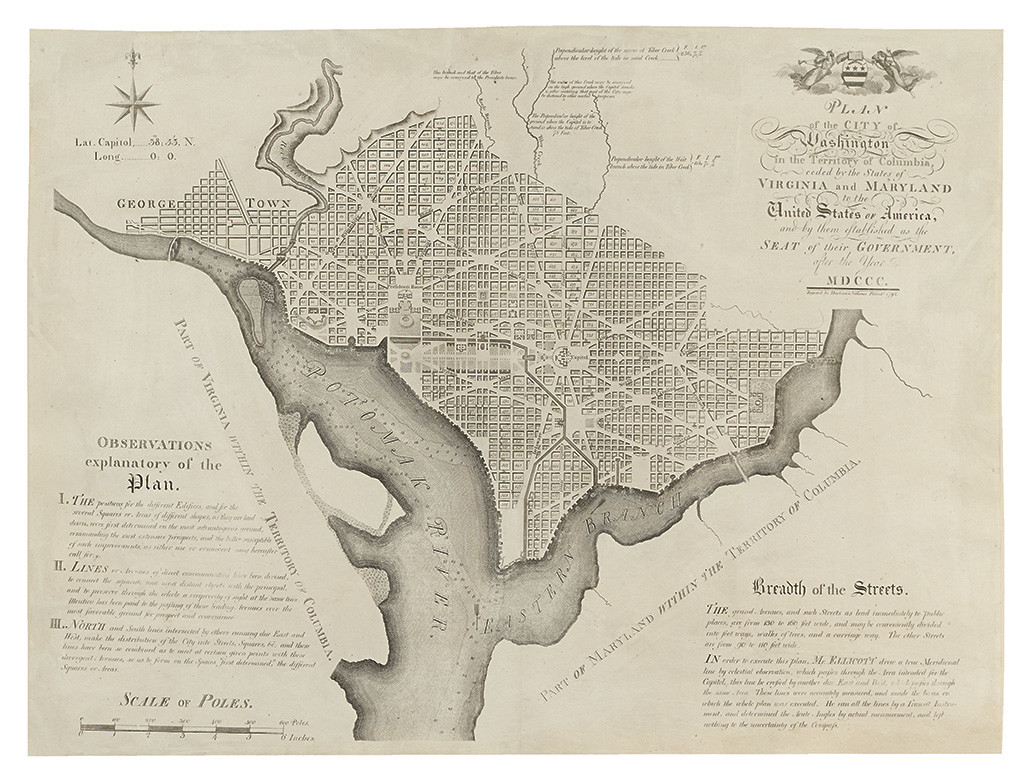
The first “official” plan of the city of Washington was finally released several months after the smaller printings. It includes more details than its predecessors, and was the first to be used by the city’s commissioners. Detailed explanations as to several aspects of urban planning are given, including the “Breadth of the Streets” which stipulates “The Grand avenues and such streets as lead immediately to public places, are from 130 to 160 feet wide, and may be conveniently divided into foot ways, walks of trees, and a carriage way.” The location of the Capital and the White House are also clearly visible, as well as several of the major named avenues, making this map easily recognizable as the Washington D.C. we know today.
